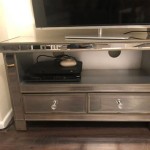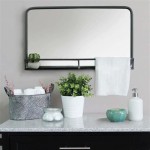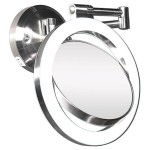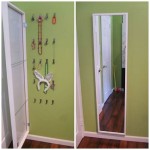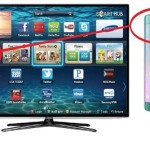How Do You Mirror iPhone to Samsung Smart TV
Mirroring an iPhone's screen to a Samsung Smart TV allows users to enjoy photos, videos, games, and other content on a larger display. Several methods facilitate this screen mirroring, each with its own advantages and requirements.
Using Apple AirPlay 2
AirPlay 2 offers a seamless wireless mirroring experience. This method requires a compatible Samsung Smart TV (2018 models and later generally support AirPlay 2). To determine compatibility, consult the TV's user manual or the Samsung support website.
To mirror using AirPlay 2, ensure both the iPhone and the Samsung TV are connected to the same Wi-Fi network. On the iPhone, open the Control Center by swiping down from the top right corner (iPhone X and later) or swiping up from the bottom (older iPhones). Tap the "Screen Mirroring" icon. A list of available devices will appear. Select the Samsung TV from the list. The iPhone's screen will then be mirrored to the TV.
Utilizing Third-Party Mirroring Apps
Several third-party apps available on the App Store enable iPhone screen mirroring to Samsung TVs. These apps often offer additional features beyond basic mirroring, such as screen recording and enhanced streaming quality. Examples of such apps include Mirror for Samsung TV and ApowerMirror.
The process typically involves downloading the chosen app on both the iPhone and the TV (if the app offers a TV version). Both devices must be connected to the same Wi-Fi network. Launch the app on both devices and follow the on-screen instructions to initiate the mirroring process.
Connecting Through a Lightning Digital AV Adapter and HDMI Cable
A wired connection provides a stable, lag-free mirroring experience. This method requires a Lightning Digital AV Adapter and an HDMI cable. Connect the Lightning Digital AV Adapter to the iPhone's charging port. Connect one end of the HDMI cable to the adapter and the other end to an available HDMI port on the Samsung TV.
Switch the TV's input source to the HDMI port connected to the adapter. The iPhone's screen will then be mirrored to the TV. This wired method is particularly useful for situations requiring minimal latency, such as gaming or presentations.
Troubleshooting Common Issues
If mirroring issues arise, several troubleshooting steps can be taken. First, ensure both the iPhone and the Samsung TV are connected to the same Wi-Fi network and that the network is functioning correctly. Restarting both devices can often resolve temporary connection issues.
If using AirPlay 2, check for software updates on both the iPhone and the TV. Outdated software can sometimes cause compatibility problems. For third-party apps, ensure both the app and the device software are up-to-date. Consulting the app's support documentation can provide specific troubleshooting guidance.
If using a wired connection, verify the integrity of the Lightning Digital AV Adapter and the HDMI cable. Try a different HDMI port on the TV. Ensure the adapter is properly connected to the iPhone's charging port.
Choosing the Right Mirroring Method
The optimal mirroring method depends on individual needs and preferences. AirPlay 2 offers convenience and wireless freedom for general content sharing. Third-party apps provide additional features and may offer broader compatibility with older TV models. A wired connection via a Lightning Digital AV Adapter and HDMI cable guarantees the lowest latency and highest stability, which is essential for time-sensitive applications.
Considering Network Factors
The stability and performance of wireless mirroring methods, including AirPlay 2 and third-party apps, depend significantly on the Wi-Fi network's quality. A congested or weak Wi-Fi signal can lead to lag, buffering, or connection drops. Ensure the network is capable of handling the bandwidth demands of video streaming. For optimal performance, consider positioning the router closer to the TV and the iPhone.
Understanding Content Restrictions
Some apps, particularly those with copyrighted content, may restrict screen mirroring functionality. This is often due to digital rights management (DRM) restrictions imposed by content providers. In such cases, the mirrored screen may display a black screen or an error message. This limitation is typically app-specific and not a fault of the mirroring method itself.
Exploring Alternative Streaming Options
While screen mirroring directly replicates the iPhone's display on the TV, alternative streaming options exist. Apps like YouTube, Netflix, and Disney+ often offer built-in casting capabilities, allowing users to stream content directly to the Samsung Smart TV without mirroring the entire iPhone screen. This method can provide a more streamlined experience for supported apps and often consumes less bandwidth than full screen mirroring.

How To Connect Phone Tv Screen Mirror Iphone A Samsung Easy Setup

Comment Recopier L écran De Votre Iphone Sur Tv Samsung Airdroid

How To Screen Mirroring Iphone Samsung Tv

4 Easy Ways To Mirror Iphone Samsung Tv For Free

How To Connect Iphone Samsung Tv

4 Best Ways To Screen Mirror From Iphone Samsung Tv Guiding Tech

How To Wirelessly Screen Mirror Iphone Or Ipad On Samsung Smart Tv

How To Stream From An Iphone Using Airplay 2

Screen Mirroring To Your Samsung Tv

How To Connect Iphone Samsung Smart Tv With Or Without Airplay Screen Mirror

